Stunning Golden hour photography tips and tricks that just work

What is Golden hour photography?
Golden Hour Photography can be divided into 2 individual hours but they are at different times of the day, one is an hour around sunrise and the other is the hour around sunset. These times are not set in stone and for example at sunrise the Golden Hour can start 30 mins just before sunrise, at sunset then this soft Golden light can linger on for up to 20 mins after sun sets.
The length of the Golden Hour is seasonal and that’s due to the height of the sun in the sky, a general rule of thumb though is with longer days the sunsets are shorter and with shorter days the sunsets are longer.
I should also add these golden hour time slots are not an actual hour long but usually they are fairly close to it. I have seen days where they can be nearly and hour and a half long and other days where they are only 20 to 30 minutes long. In fact some days at sunrises and sunsets their isn’t a golden hour at all due to cloud cover and weather conditions. In Ireland that sadly tends to happen a lot.
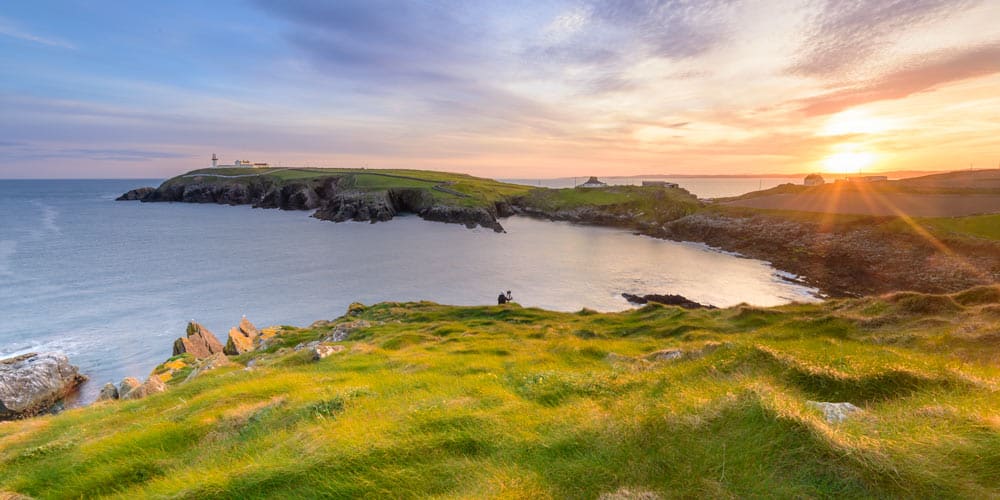
What makes Golden hour photography so special?
The light at golden hour gives us this beautiful soft warm feeling and this also transforms the landscapes before our very eyes. The sunlight is generally not very strong at these times and due to the lower angle of the sun it helps to highlight the textures of the landscape and show all the undulations and hills and transform these textures into light and shadow.
The sunlight’s colour temperature is so warm it creates this natural warm glow coupled with this soft light you get when you shoot during golden hour, it’s no wonder it’s so appealing to all of us. It’s also amazing for shooting portraits in with it’s soft light and side lighting can provide some very beautiful images.
In comparison direct sunlight around mid day is very harsh and creates strong dark shadows and as it is directly above tends not to show off the contours of the landscape as much. This strong harsh light is generally not very flattering.
At golden hour the light softens as it has lost most of its strength by the time it reaches you or the scene giving you this softer lighting effect and then coupled with the warmer colouring you naturally get via the yellow golden light of the sun it creates a far more appealing scene to photograph. Try it for yourself by simply going to a location at midday and at sunset then later in the day. The difference is truly
This is why the golden hours are so very appealing to landscape photographers as they always creates a more romantic and softer scene that’s bathed in beautiful soft light. Completely transforming the landscape for those special few moments, let’s face it we all love a good sunset.
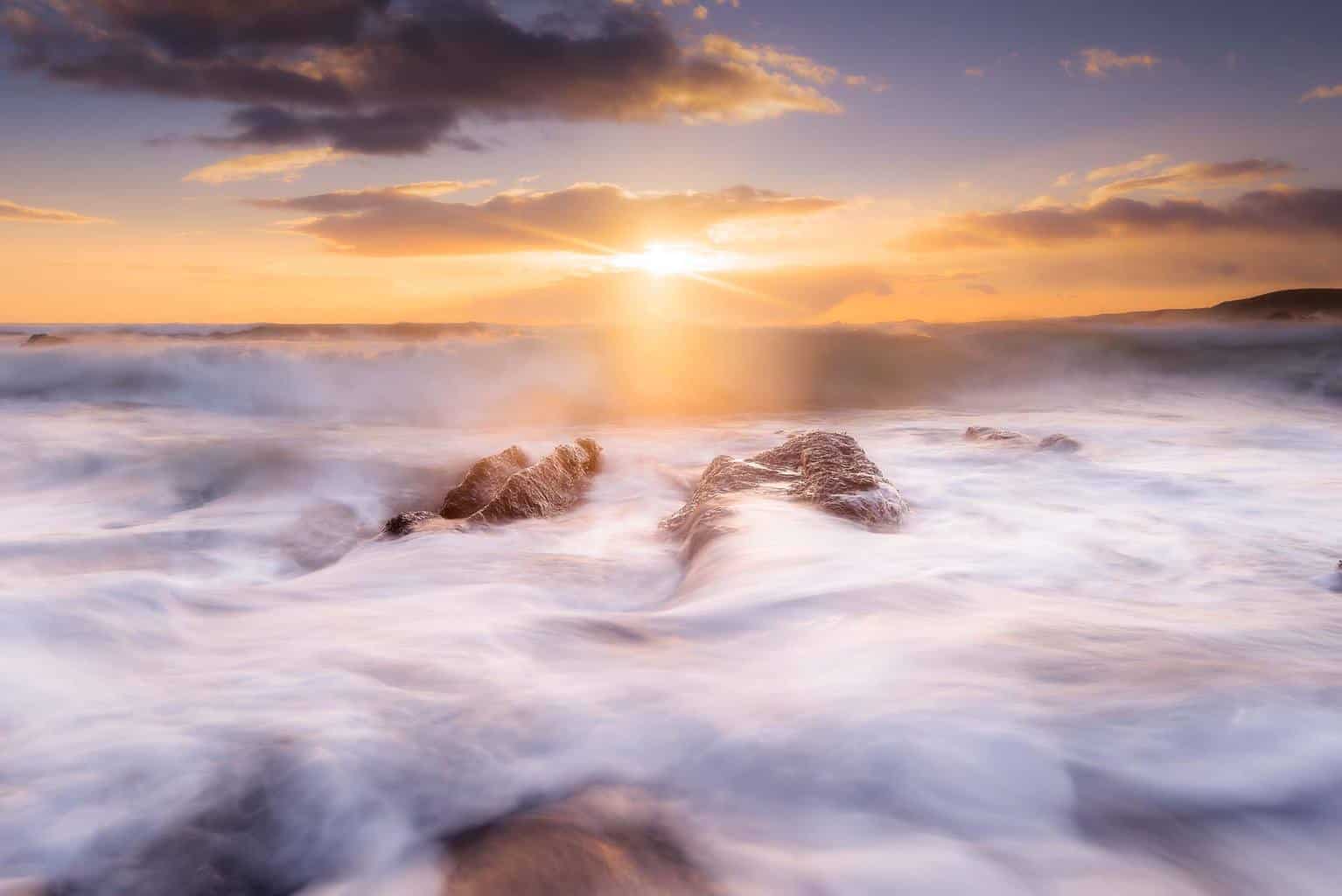
What are the best golden hour camera settings to start with?
My first bit of advice for anyone starting out is to try and shoot your photographs in Raw rather than jpeg. I have a complete blog post here on Jpeg vs Raw which goes into detail exactly what the difference between the two is.
Raw keeps all the hidden detail in your photographs and means you can easily take you photographs into editing software like Luminar Neo and get back as much shadow detail detail as possible.
Avoid shooting directly into the sun if you can while starting off. While the sunlight is less powerful it is still very strong. So have a look around you and check the sky slightly to the left or right of the sunset as you can get some really beautiful light in the clouds there also. Maybe there is a cliff face or mountain behind you being bathed in gorgeous light.
If you have ever tried to take a photograph at sunset looking straight into the sun you will notice any land or objects between you and the sun will most likely come out as a silhouette.
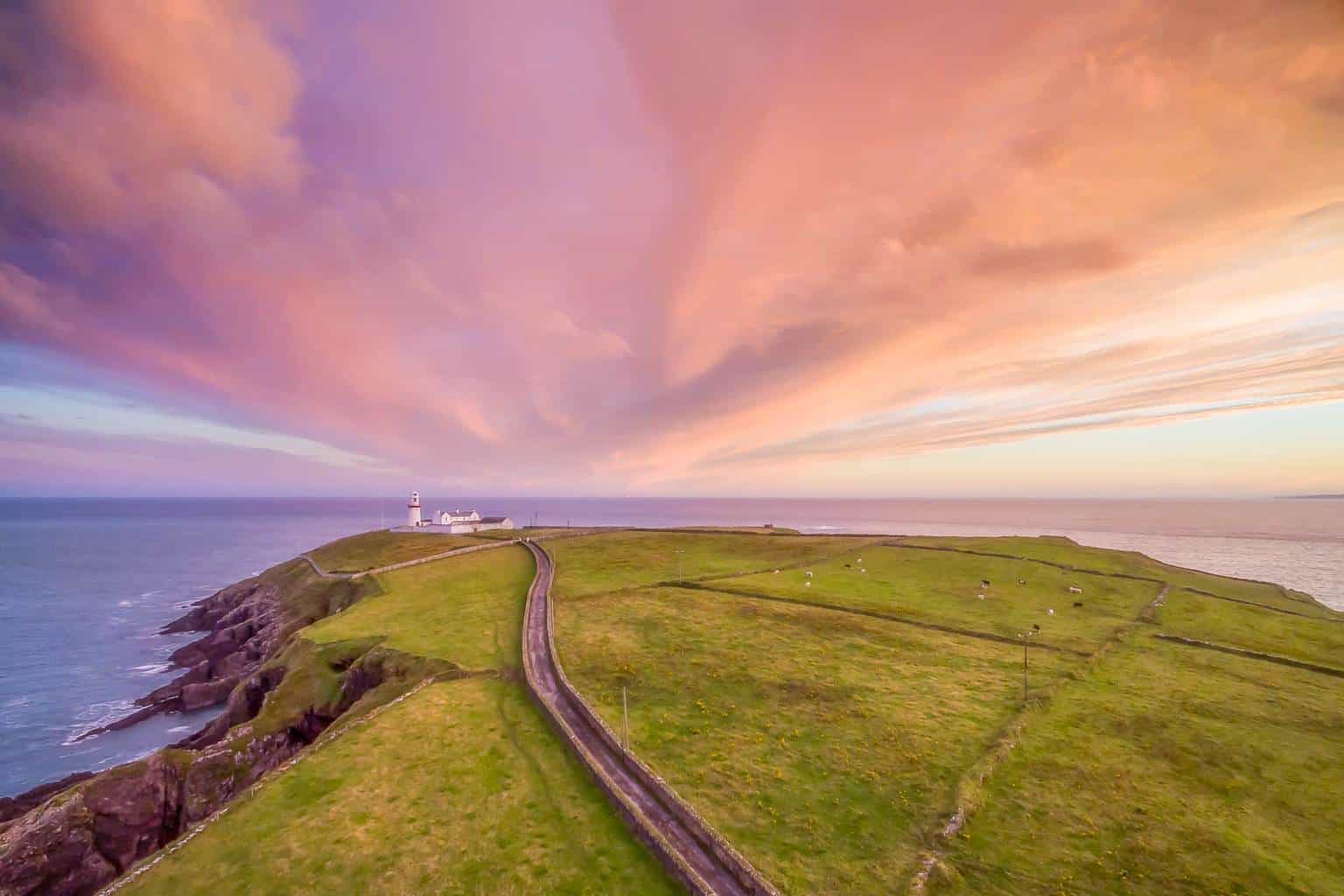
The camera settings explained…
So to keep this as simple as possible let me just explain a few things to you very quickly.
In photography we have three settings that principally control how your photography will look and be exposed.
ISO – This is basically how sensitive your camera’s sensor is to light.
Aperture – This is the size of the hole the light flows through in the lens. This does two things it controls how much light is let in and also how much of your image will be in focus
Shutter speed – This is how long the shutter stays open on your camera or how long the sensor can see the light for.
The above are incredibly basic explanations but the exposure triangle will be something I will be going into in more detail shortly.

So what setting should you use?
ISO
Well it’s best to keep your ISO at it’s native or base setting. A quick google of your camera models number and native iso setting will give you this answer. If you are thinking well that’s a bit too much for me then don’t worry your camera most likely will already have done that automatically for you.
Aperture
Normally for landscapes we are shooting from F5.6 up to a max of F16 on a full frame camera. On an apsc camera it would be again from F5.6 up to F11 this time. Smaller sensor sizes should generally only go up to F8. In reality you don’t need to be too overly concerned about this now but it’s good to know as bad habits can be hard to quit, especially for landscape photographers as a lot of the time we get very wrapped up in the scene.
Shutterspeed
If you are shooting in Aperture Priority your camera will automatically set this for you so it’s something you shouldn’t have to worry about. I would recommend you use a tripod for these shots as you don’t want to introduce any form of camera shake which could blur your image.
The main reason we would want to change our shutter speed to a specific setting would be to create motion blur or help stop it.
The long exposure photograph created below was created by using an Neutral Density filter to darken down the light going to the camera and hence meaning we would need to let the camera see the image for longer so it can capture enough light to make the image. This is what gives us this motion blur we want.
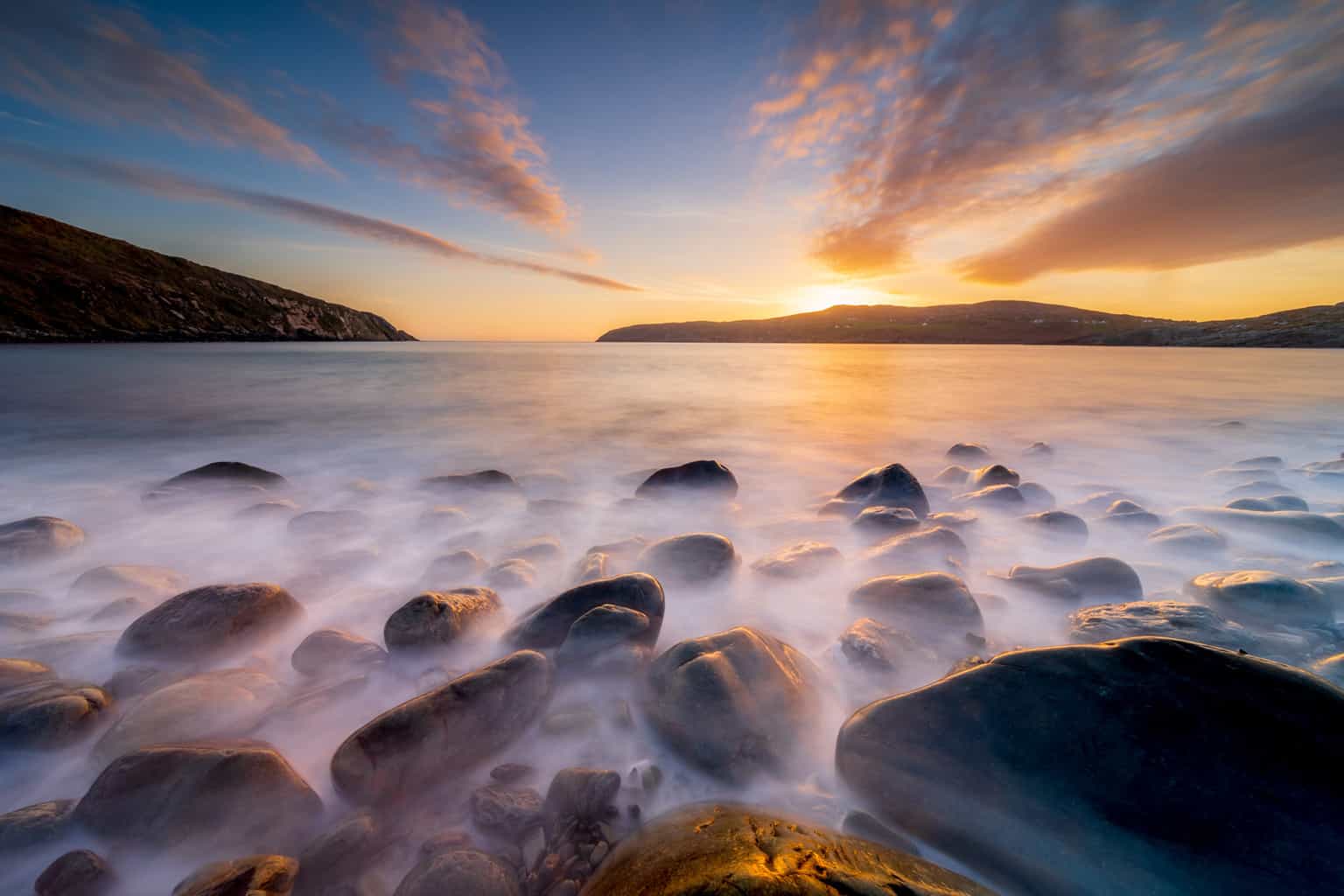
So what are the essential bits of equipment you need to capture a golden hour sunset photograph.
Tripods
I would always recommend using a tripod for sunsets or sunrises as the light level is dropping and you want to keep your photographs sharp so using a tripod will help you here.
Camera and lens
Well whatever camera you have is going to work here but if you have a mirrorless camera or dslr you will see better results from them. A good wide angle lens also really helps here to take in all those wonderful views being bathed in glorious sunlight at golden hour.
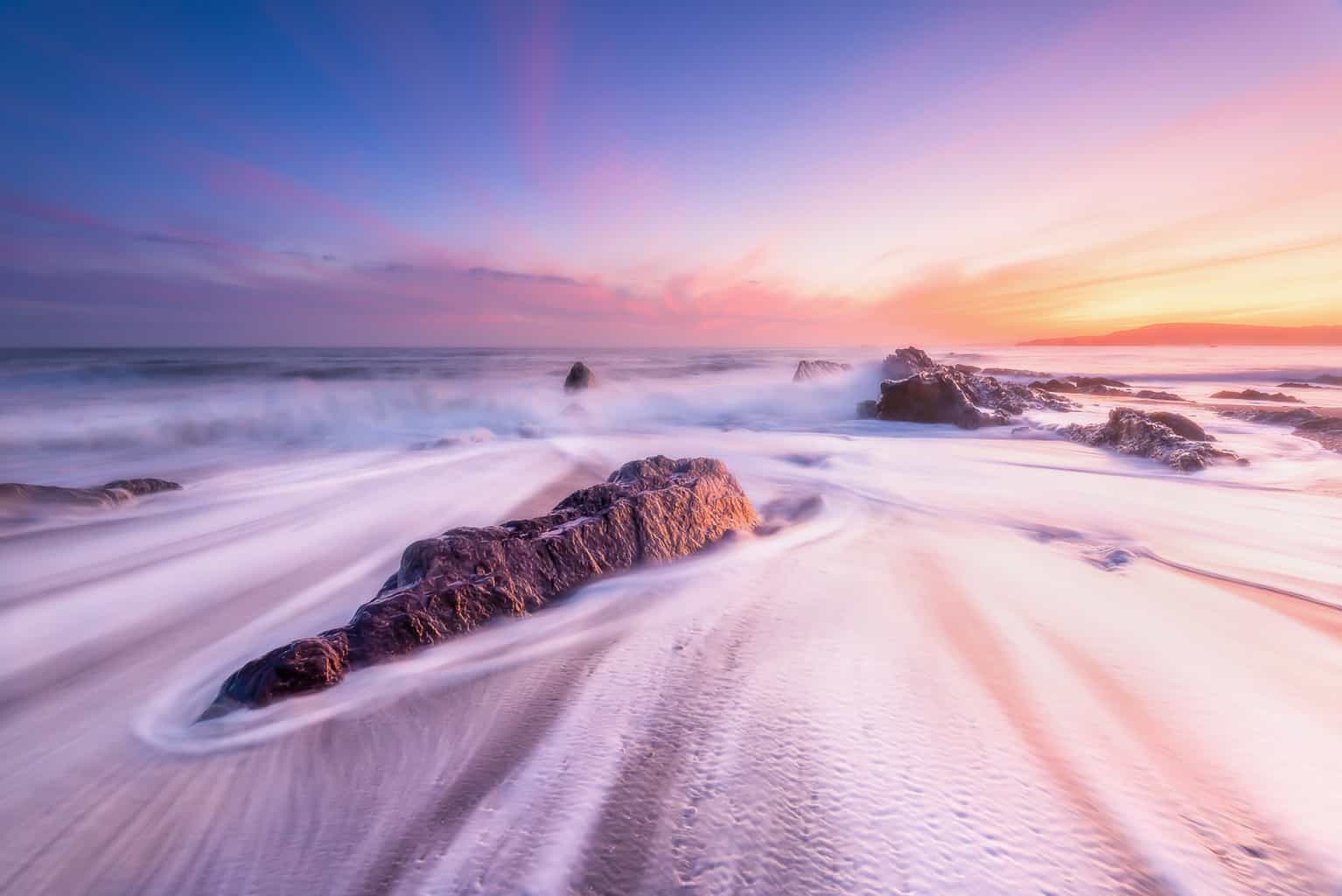
Photography Filters
I never leave home without my Formatt Hitech photography filters and I am very happy to say I can give you 10% off their filters via their website Click here for more details on this offer.
I use ND filters to slow down my shutterspeed and a graduated filter to help balance the bright sky with the foreground, a Circular Polarising filter is also great to help saturate your colours a bit more naturally and remove shine or glare from surfaces.
Again the Formatt Hitech Firecrest filters truly are excellent.
Editing Software
I use both Adobe Lightroom and Luminar Neo (discount code here) from Skylum. Luminar Neo is an amazing bit of software at a fantastic price and again I can offer you $10 or €10 off the price of it. Click here for my Luminar Neo review to find out more.
Have a look at my photography tips and tricks section in the menu where I cover everything from…
ND Filters explained and how to choose the right ones,
Seascape Photography explained,
Long Exposure photography tips,
How to backup your photographs,
My secret tips to photography,
Thank you for reading my beginners guide to golden hour photography, I will be adding more photographs and in-depth settings to this blog post soon so please stay with me 🙂
See you out there,
Kieran.
